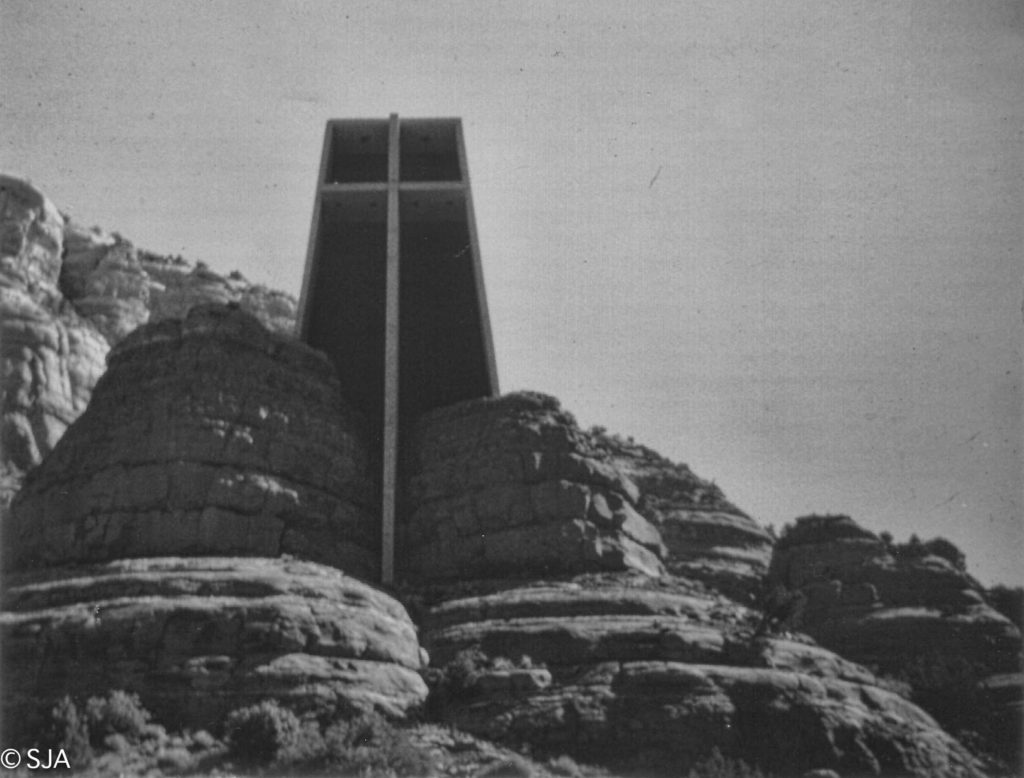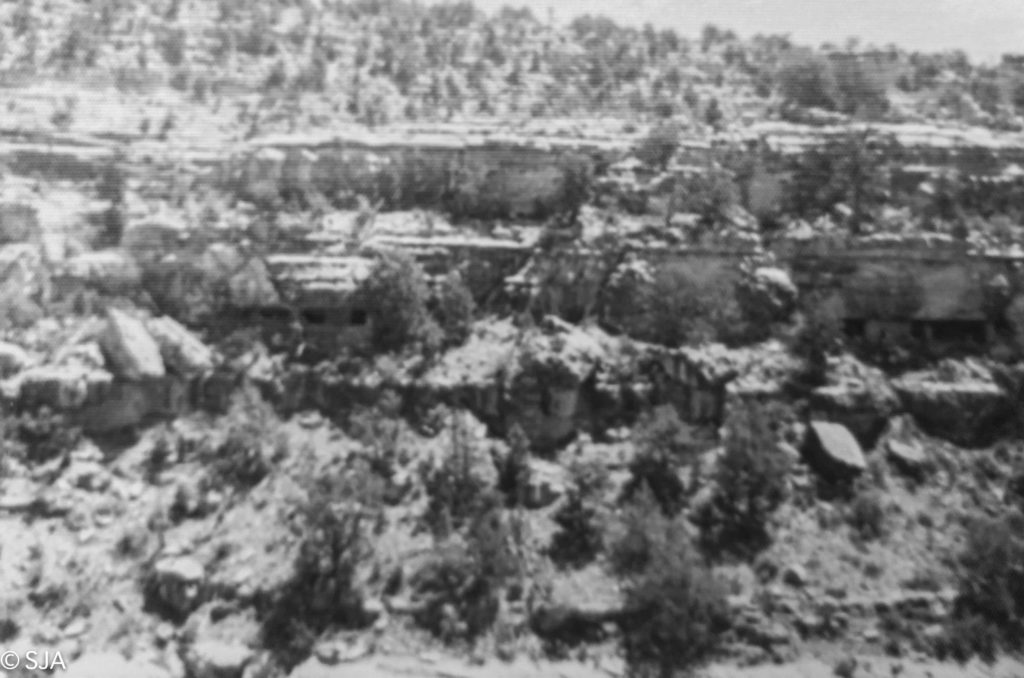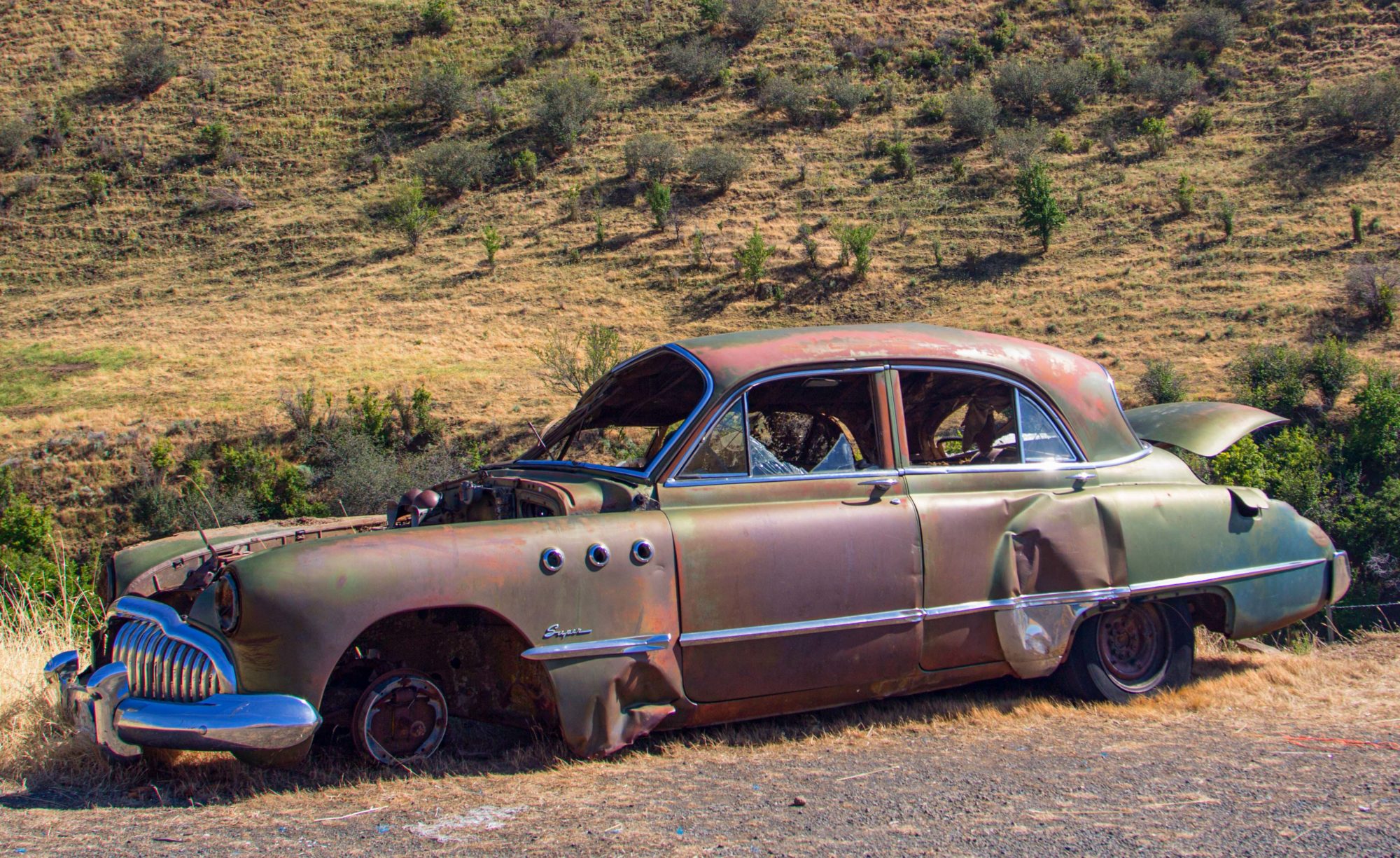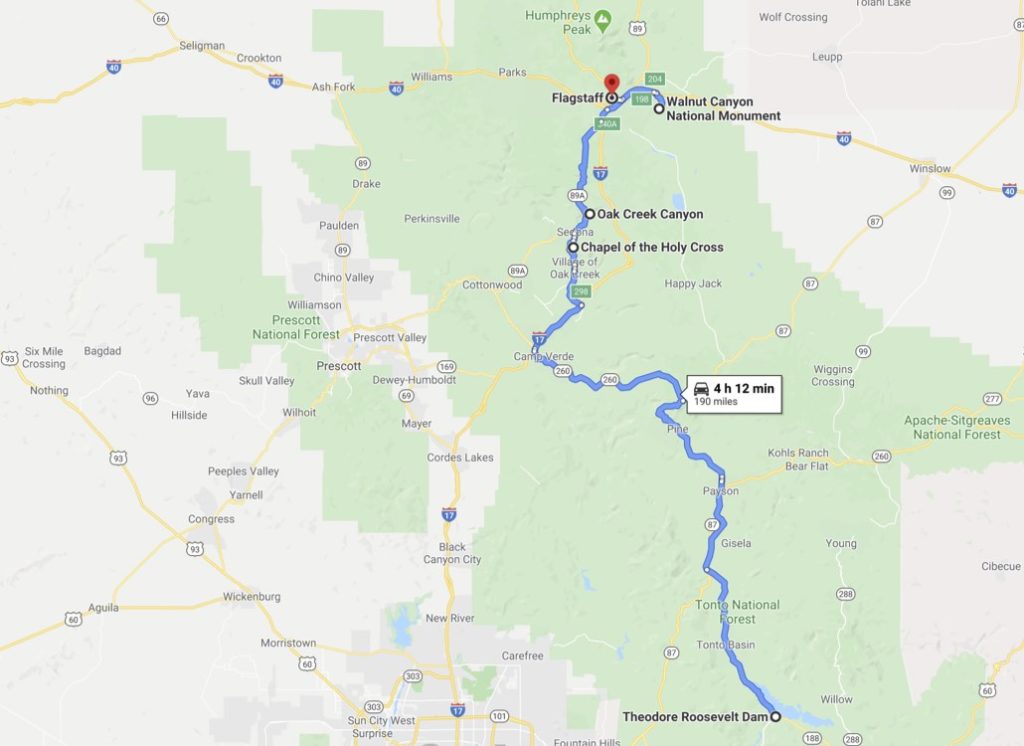Cross Country (Part Four)
We caught a last glimpse of the blue waters of Theodore Roosevelt Lake in our rear-view mirror as we continued our drive through the desert. Our road took us north to the KOA campground in Camp Verde, Arizona. That was one barren place, no trees, just scrubby vegetation at the edge of the campground. We found our tent site, which was just like all of them, unloaded the camp gear and attempted to set up our tent. That was useless! The ground was as hard as cement. We pounded a tent peg partway into the ground but not deep enough to hold. More than one tent peg was bent at the attempt. The ground was just too stubborn. We folded the tent and packed it away. As had become our camp routine, after we set up the tent (or in this case didn’t), we cooked our supper on the Coleman stove on the picnic table. One good thing about the KOA campgrounds – they had showers and most had laundry facilities. After a shower to wash off the day, we crawled into the car to sleep for the night.
I was glad for morning to come. Sleeping stretched out on the ground would have been more comfortable than being folded up like an accordion in the cramped back seat. After fixing some breakfast we were off to spend the day exploring parts of Arizona. Driving past cacti and desert grasses, we saw red cliffs rise out of the wilderness. The desert town of Sedona, Arizona is surrounded by red rock buttes and pine forests. There in the middle of the red buttes and cliffs above Sedona stood a cross framed by walls around a window of glass. Chapel of the Holy Cross served as a beacon and beckoned travelers to enter the refuge for a moment of spiritual reflection. It offered a cool, quiet, peaceful resting place.

Chapel of the Holy Cross
Just beyond Sedona is Oak Creek Canyon, a smaller cousin of the Grand Canyon. The twelve-mile-long canyon is a river gorge cut into the Colorado Plateau in the Coconino National Forest. It is a popular tourist destination that offers hiking trails, a swimming hole and fishing. We hiked into the canyon to enjoy the scenery and a bit of the rich history of the area.
Further up the road near Flagstaff is Walnut Canyon National Monument. This canyon was once home to the Sinagua, an ancient people who possibly came from the Mogollon culture. Sinagua means “without water” in Spanish, acknowledging that they were able to live in this arid region. When the Sinagua left the area, over 80 cliff dwellings were abandoned. Being able to walk down the trail and see into their dwellings gave us a glimpse into their lives. We also received a greater appreciation for the people who survived this rugged place and harsh conditions to live in the canyon. The Sinagua Indians were able to grow maize, beans and squash as well as harvest plants and animals from the land and streams.

I know the picture’s blurry – it’s old – but you can see some of the dwellings in the cliffs of Walnut Canyon
Leaving behind remnants of the past, we drove on to Flagstaff, ready for a good night’s sleep. We set up camp, had our supper, and crawled into our sleeping bags. As sleep came, there was a deep satisfaction of the history we had shared and the unique beauty we had seen. What would tomorrow bring? Each day had been an adventure and there was more to come.

